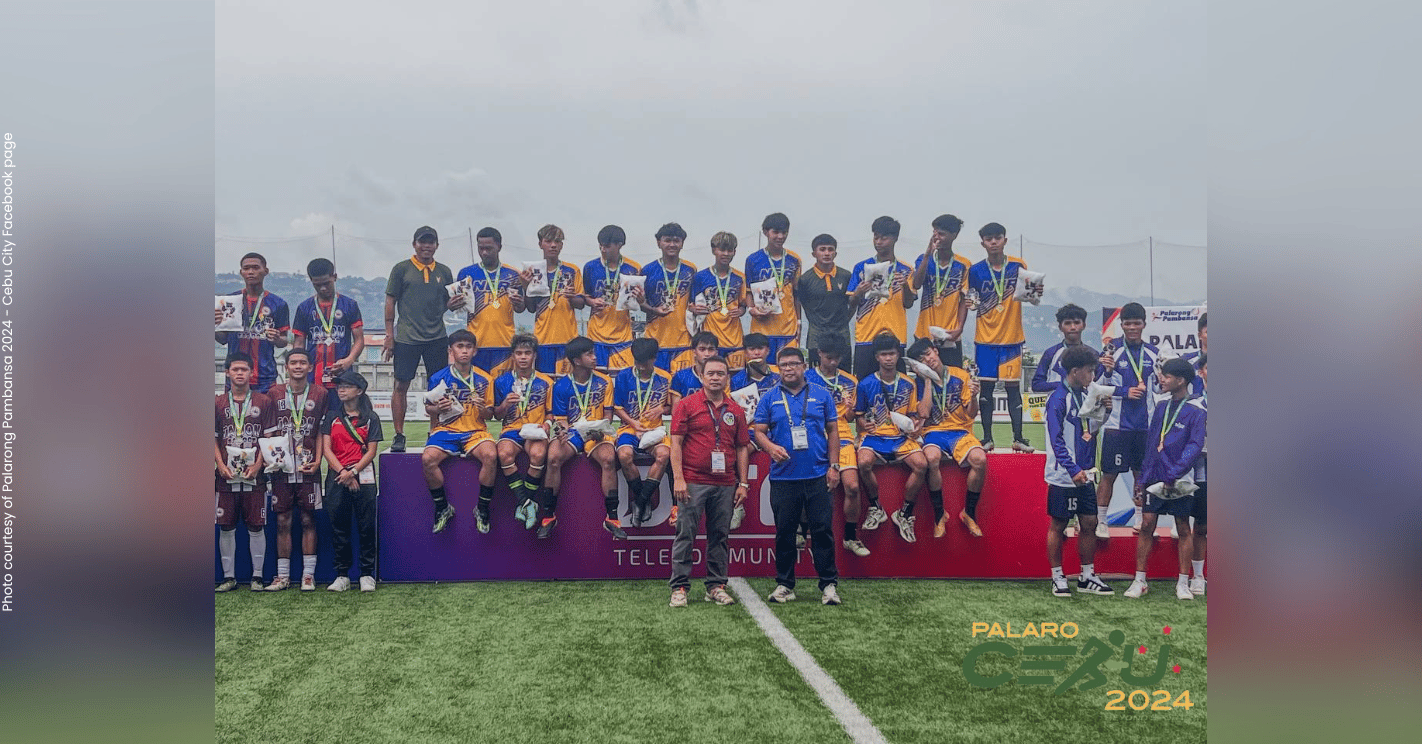
FEU remains on top despite 1st loss over Ateneo
- March 30, 2019 10:55
FEU Advocate
October 25, 2021 03:50

For more than 80 years, the elusive Tamaraws have been the emblem of Far Eastern University (FEU) as they embody both strength and resiliency—qualities deeply associated with the University’s core values. Unfortunately, they remain to be identified as critically endangered in the bushy forests of Mindoro Island.
Tamaraws are deemed as a significant part of our national pride and natural resources. Due to their high risk of extinction, they need urgent yet substantial contributions to their conservation and protection—this is why many organizations have made efforts to achieve these goals, including FEU.
Under Proclamation No. 273, s. 2002 by Former President Gloria Macapagal-Arroyo, October is recognized as the Special Month for the Conservation and Protection of the Tamaraw in Mindoro. During this month, government offices, organizations, and Filipino citizens conduct various activities and projects across the country.
Understanding the Tamaraws
Tamaraws, with the scientific term Bubalus mindorensis (Mindoro Dwarf Buffalo), are endemic in Mindoro, specifically found in Mount Iglit-Baco National Park. Reserved yet aggressive, they are a force to be reckoned with when bothered by humans.
Body color ranges from dark brown to grayish with dark lines on the spine and white markings in the hooves and the inner lower forelegs. The horns of these Tamaraws are in the distinctive V-shape placed on top of their heads.
They prefer living on mixed forests and grassland, as the grass itself is their primary source of food. As nocturnal animals, they thrive during nighttime as a way of avoiding humans. They produce beneficial effects on nature by making the vegetation flourish, preventing brush overgrowth, and lessening the possibility of wildfires.
However, as of this year, the Tamaraws remaining are estimated at 427, maintaining their conservation status as critically endangered since 2008. With this, saving the Tamaraws now means helping the ecosystem and keeping our national identity.
Plans and Actions against Extinction
The Department of Environment and Natural Resources - Protected Area and Wildlife Bureau (DENR-PawB) established the Tamaraw Conservation Program (TCP) in 1978. The said program aims to effectively increase the Tamaraw population by the year 2025 through both scientific and community-based approaches, such as data gathering for developments and getting to know the locals. It involves an allotted budget and continuous cooperation with authorities, non-government organizations (NGOs), and local stakeholders.
Aside from natural death, other threats are associated with the Tamaraws’ decline, such as illegal hunting and poaching. In response to this issue, TCP has hired at least 25 rangers to protect them from illegal poachers.
The Asian Wild Cattle Specialist Group, formed by the International Union for Conservation of Nature (IUCN), partnered with Re:wild, DENR, and Biodiversity Conservation Society of the Philippines to ensure a definite and comprehensive plan towards the Tamaraws’ long-term conservation.
The result of their extensive development and research is a 10-year work plan and guideline, the Tamaraw Conservation and Management Action Plan 2019 to 2028. It contains the vision, goals, and action steps to be used by the concerned individuals and groups.
Driven by their passion for the Tamaraws and the environment, these independent organizations composed of benevolent individuals extend help through different ways such as donations, fundraising events, and project participation.
The World Wide Fund (WWF-Philippines) took greater strides for Tamaraw conservation in partnership with FEU on a project called TAMS 2 from 2012 to 2020. This joint endeavor intended to double up the numbers of the Tamaraws from 300 to 600 by 2020. Sadly, with the constraints made by the pandemic, the target number was not met.
By the University, for the Tamaraws
Since 2005, the University has stood up to the challenge through the Save the Tamaraws project, a collaborative effort between student leaders and several University offices to address the long-standing needs of the Tamaraws.
Dr. Marilou F. Cao, the Director of the FEU Volunteerism Services Office (FEU VSO), recalled the activities conducted during the face-to-face classes, which seek to educate the students about the situation of the Tamaraws.
“Noon nung wala pang pandemic, mayroon tayong mga panel discussions at forums diyan sa University (Before the pandemic, we had panel discussions and forums in the University.) And then we have the TAMworld exhibit which features the Taw’buid tribe [inhabitants of Mindoro], we also have the on-the-spot painting contest.”
Furthermore, Dr. Cao shared that members from student organizations were deployed to Mindoro to see the progression of the Tamaraws. She added that FEU had worked closely with the local government of Occidental Mindoro and other NGOs such as Mindoro Biodiversity Conservation Foundation (MBCFI).
The FEU students are encouraged to contribute to this endeavor, particularly BS Biology students, as they conduct meticulous research about the Tamaraws, which further helps to determine the ever-changing needs of the endangered buffalos.
However, the pandemic has taken a toll on the rangers responsible for the conservation of the Tamaraws. As a result, FEU VSO will launch a fundraising event for the rangers in partnership with other student organizations.
“Just like the rest of us, they need enough money to survive and resources to efficiently protect the Tamaraws. If those who are protecting the Tamaraws continue to be not in an optimum situation to properly oversee and care for them, then the population of the Tamaraws will also be in great danger,” FEUCSO President Arnold Kristoff Josue Luzon shared.
According to TCP, illegal poaching became more prevalent, possibly due to the lost livelihood of people in Mindoro. Despite this, there was less disturbance in the Tamaraws’ habitat since there were no visitors.
To address this matter, FEUCSO raised P306,260.00 as of last year to preserve the Tamaraws project and battle against illegal hunting and poaching.
Both Luzon and Dr. Cao are hopeful that the Tamaraws can be saved through the support of the youth and other compassionate individuals.
“I am banking on our generation’s continued support and contribution to the conservation of the Tamaraws. I still believe that people, especially the FEU community, will take charge of creating an environment that is not only safe for human beings but for every living thing as well,” Luzon voiced.
As we continue to support the conservation of the Tamaraws, may we never fail to see the deep-rooted causes of their extinction in the first place—our failure to appreciate and protect these animals from harm. Their significant value to society should be realized as their presumed extinction is irreversible—a crucial loss for the country and the culture.
- John Vincent C. Cruz and Samantha Cheyenne Gail D. Pagunuran
(Illustration by Mary Vel S. Custodio/ FEU Advocate)
RELATED LINK: https://feuadvocate.net/kalibasib-bids-farewell-at-21/
References:
Animalia. (2021). Tamaraw - Facts, Diet, Habitat & Pictures on Animalia.bio. https://animalia.bio/tamaraw
Arceo-Dumlao, T. (2016, October 23). FEU champions the tamaraw. INQUIRER.Net. https://business.inquirer.net/217254/feu-champions-the-tamaraw
Asian Wild Cattle Specialist Group. (2021). Tamaraw conservation. Asian Wild Cattle. https://www.asianwildcattle.org/tamaraw-conservation.html
De Vera-Ruiz, E. (2020, October 11). Kalibasib, the tamaraw born and bred in captivity, has died. Manila Bulletin. https://mb.com.ph/2020/10/11/kalibasib-the-tamaraw-born-and-bred-in-captivity-has-died/
DENR (2013, November). TAMARAW PROGRAM - Conservation and Enhancement of the Natural Heritage of Mts Iglit-Baco National Park. http://greenconvergencephil.com/wp-content/uploads/2018/01/Tamaraw-Program-Nov.2013.pdf
DENR (2019). Tamaraw Conservation and Management Action Plan 2019 – 2028. Department of Environment and Natural Resources, Philippines. http://www.cbsg.org/sites/cbsg.org/files/documents/TamarawTCMAP_Oct21_FINAL.pdf
Eco Explorations. (2021). PROJECT RANGER: Tamaraw Rangers – Eco Explorations. https://ecoexplorationsph.com/support-a-ranger/
Henson, J. M. (2013, January 30). Save the Tamaraw. Philstar.Com. https://www.philstar.com/sports/2013/01/30/902773/save-tamaraw
Philstar. (2012, July 1). Saving the critically endangered tamaraw. Philstar.Com. https://www.philstar.com/business/agriculture/2012/07/01/823069/saving-critically-endangered-tamaraw
WWF-Philippines. (2019, November). The WWF-Philippines National Youth Council Celebrates Tamaraw Month with FEU. World Wide Fund - Philippines. https://wwf.org.ph/resource-center/story-archives-2019/nyc-feu-tamaraw-month/









